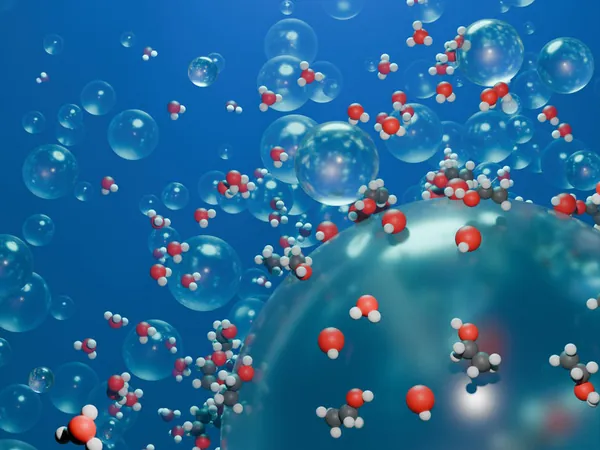
Nanobubbles: The Tiny Revolution Quietly Changing Industries
2025-01-03
Author: Jia
A groundbreaking study led by Dr. Hamidreza Samouei at Texas A&M University is unlocking the secrets behind the stability of nanobubbles—remarkably tiny bubbles with diameters smaller than a single strand of hair.
The research, detailed in the latest edition of The Journal of Physical Chemistry, reveals how these minuscule bubbles can maintain their presence in liquid environments for an extended period, which is a game-changer for a multitude of industries.
As Dr. Samouei, a research assistant professor in the Harold Vance Department of Petroleum Engineering, states, “When we inject gas at an industrial scale, we don't want to waste that gas. We aim to maximize its use for chemical reactions.” The main goal of this research is to enhance the longevity of nanobubbles in a solution, allowing gases to remain suspended indefinitely without dissipating.
The Green Future of Ammonia Production
In the quest for greener alternatives, nanobubbles show promise in smaller ammonia processing plants, particularly those powered by renewable energy sources. This shift could revolutionize the fertilizer industry and other sectors reliant on ammonia, drastically reducing the carbon footprint associated with traditional production methods.
The researchers found that the stability of these nanobubbles is heavily influenced by their electric charges, as well as the interactions these charges have with the surrounding solvent. Furthermore, the presence of any additives within the solution can significantly alter their stability, meaning every component of the mixture can play a critical role in the effectiveness of nanobubbles.
Real-World Applications Beyond Imagination
Nanobubbles aren't just a scientific curiosity; they are paving the way for practical applications that can transform various sectors. For example, in wastewater treatment and hydroponics, the presence of nanobubbles has been shown to enhance plant growth significantly. Research indicates that crops grown in water infused with nanobubbles tend to grow larger than those without, thanks to increased oxygen availability in the water, which fosters a more robust growing environment.
Moreover, this research isn't just about enhancing agriculture. Dr. Samouei and his team are applying their findings to brine mining—a practice where carbon dioxide is injected into saltwater solutions to extract valuable minerals. These minerals are key components in products ranging from lithium batteries to magnesium fertilizers, making the efficient use of nanobubbles highly relevant.
Samouei notes, “For this project, we wanted to find a way to increase carbon dioxide concentrations, so we employed nanobubbles. Now that we better understand how to extend the lifespan of a nanobubble, they will become instrumental in brine mining practices.
The implications of this research extend far beyond the laboratory. As industries seek innovative and sustainable solutions, the quest to harness the power of nanobubble technology is already promising a brighter, more sustainable future. Stay tuned for further developments in this fascinating area of study!
 Brasil (PT)
Brasil (PT)
 Canada (EN)
Canada (EN)
 Chile (ES)
Chile (ES)
 Česko (CS)
Česko (CS)
 대한민국 (KO)
대한민국 (KO)
 España (ES)
España (ES)
 France (FR)
France (FR)
 Hong Kong (EN)
Hong Kong (EN)
 Italia (IT)
Italia (IT)
 日本 (JA)
日本 (JA)
 Magyarország (HU)
Magyarország (HU)
 Norge (NO)
Norge (NO)
 Polska (PL)
Polska (PL)
 Schweiz (DE)
Schweiz (DE)
 Singapore (EN)
Singapore (EN)
 Sverige (SV)
Sverige (SV)
 Suomi (FI)
Suomi (FI)
 Türkiye (TR)
Türkiye (TR)
 الإمارات العربية المتحدة (AR)
الإمارات العربية المتحدة (AR)